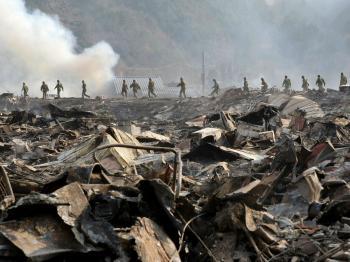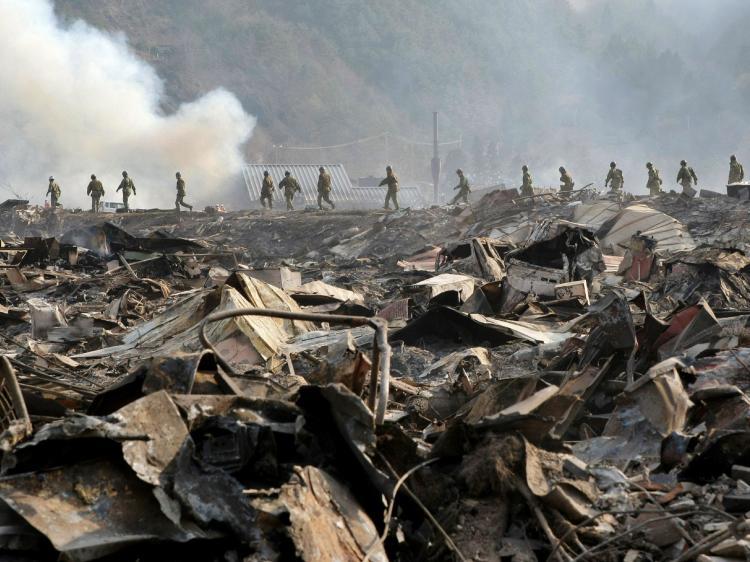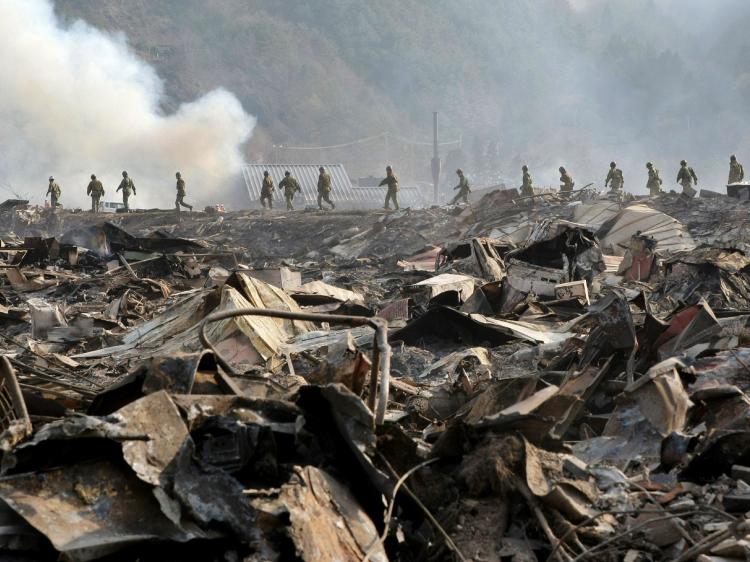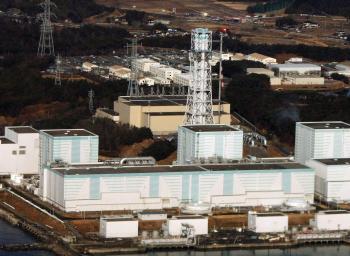TOKYO—Japan’s Chief Cabinet Secretary Yukio Edano warned on Sunday that the Fukushima Daiichi No. 3 Reactor could explode. “It is estimated that a large amount of hydrogen has accumulated near the upper area of the building at the No. 3 Reactor, and there is a possibility of hydrogen explosion,” he said at a televised press conference.
Edano, however, downplayed the threat at the second reactor and said only a very small amount of radioactive material has leaked out and there is no need to call for extra evacuation measures.
On Saturday after a strong aftershock, the No. 1 reactor at the same plant exploded. Seawater is frantically being pumped in a bid to avoid a meltdown of the fuel rods. The rods need to be complete submerged in water at all times to avoid overheating. Using seawater is considered a measure of last resort since it will make the plant inoperable in the future.
Fukushima prefecture authorities said on Sunday that so far 22 people have tested positive for radiation exposure, but 160 more may also have been irradiated. Fifteen of the confirmed cases were at a hospital within 6 miles of the reactor.
Everyone within a 20 km (12.4 mile) radius of the reactor has been evacuated.
Because of damage sustained at thermal power stations, in addition to the nuclear power plants, Prime Minister Naoto Kan authorized on Sunday the unprecedented move of rolling blackouts across nine prefectures including Tokyo. The blackouts will occur between 6:20 a.m. and 10 p.m. Monday in Tokyo, Gunma, Tochigi, Ibaraki, Saitama, Chiba, Kanagawa, Yamanashi and eastern Shizuoka.
People are preparing for the blackouts by cleaning out shop shelves of food, water, and batteries.
Edano, however, downplayed the threat at the second reactor and said only a very small amount of radioactive material has leaked out and there is no need to call for extra evacuation measures.
On Saturday after a strong aftershock, the No. 1 reactor at the same plant exploded. Seawater is frantically being pumped in a bid to avoid a meltdown of the fuel rods. The rods need to be complete submerged in water at all times to avoid overheating. Using seawater is considered a measure of last resort since it will make the plant inoperable in the future.
Fukushima prefecture authorities said on Sunday that so far 22 people have tested positive for radiation exposure, but 160 more may also have been irradiated. Fifteen of the confirmed cases were at a hospital within 6 miles of the reactor.
Everyone within a 20 km (12.4 mile) radius of the reactor has been evacuated.
Because of damage sustained at thermal power stations, in addition to the nuclear power plants, Prime Minister Naoto Kan authorized on Sunday the unprecedented move of rolling blackouts across nine prefectures including Tokyo. The blackouts will occur between 6:20 a.m. and 10 p.m. Monday in Tokyo, Gunma, Tochigi, Ibaraki, Saitama, Chiba, Kanagawa, Yamanashi and eastern Shizuoka.
People are preparing for the blackouts by cleaning out shop shelves of food, water, and batteries.




